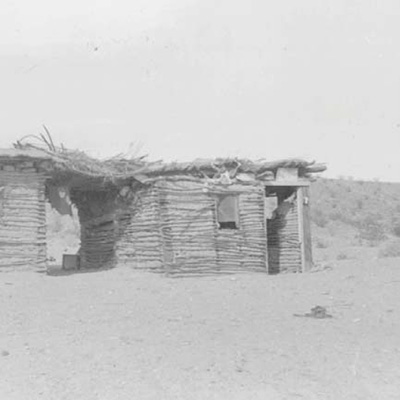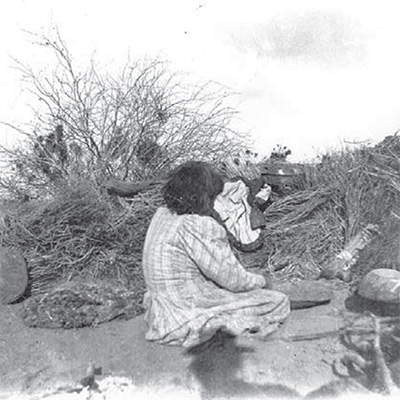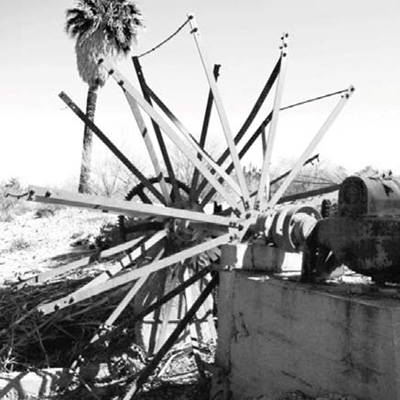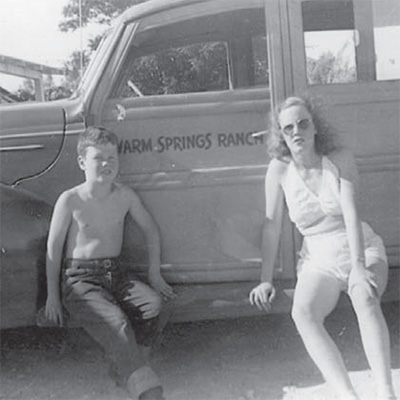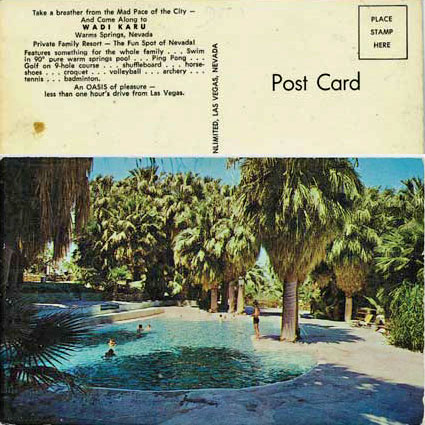Like a gemstone stashed away in the upper Moapa Valley, Warm Springs Natural Area is an oasis in the Mojave Desert. The 1,250-acre property, formerly known as the Warm Springs Ranch, features more than two dozen bubbling springs, rushing streams and lush wetlands. It is also home to nearly 30 sensitive species, including the Moapa dace, and more than 200 species of birds.
Visitors to Warm Springs are invited to explore a 2/3-mile trail that meanders through woodlands along two spring-fed streams. Perfect for bird-watching and sightseeing, the trail includes informational kiosks, benches and a viewing deck.
Warm Springs plays an integral role in the Southern Nevada watershed. The springs here feed the 32-mile-long Muddy River, which flows to Lake Mead, Southern Nevada’s primary drinking water source.
The water sources of Warm Springs
The Warm Springs are what makes this lush landscape unique within southern Nevada’s arid, desert climate. Water from more than two dozen natural springs form warm-water tributaries, which become the headwaters of the Muddy River. The warm (90°F) spring water wells up from a deep underground aquifer.
There are five major spring complexes in the area. Two of these are within Warm Springs: Cardy Lamb and Baldwin springs. The largest spring, Big Muddy Spring, is located on the 72-acre recreation area owned by the Church of Jesus Christ of Latter-day Saints. The remaining springs, Pederson and Plummer springs, are located on the Moapa Valley National Wildlife Refuge.
Warm Springs is located near the southern end of the White River regional groundwater system. The aquifers in this area are generally composed of Paleozoic carbonate rock and Tertiary sedimentary rock. The water in the aquifer comes from rain and snow in eastern Nevada and traveled underground for thousands of years before coming to the surface at Warm Springs.
History of Warm Springs Natural Area
Abundant water and food resources attracted prehistoric peoples, Native Americans, outlaws, ranchers and early settlers to the Moapa Valley and Warm Springs area for centuries. All of the region’s inhabitants have left their mark on the land and, in many cases, evidence of their homes, food sources and ways of life.
The archaeological record tells us the Southern Paiute people and their ancestors lived in the Moapa Valley for thousands of years before the first European settlers arrived. Surveys of the area identified prehistoric habitations, artifacts and rock shelters located on terraces above the floodplain.
The first people to enjoy the spoils of the land were hunters and gatherers. In addition to hunting bighorn sheep and smaller animals such as rabbits, these native ancestors collected grass seeds, berries, cactus fruit and mesquite pods to complete their diet.
Thanks to the discovery of an ancient corn cob and radiocarbon dating, scientist can trace evidence of farming in Warm Springs back nearly 2,000 years. Early crops included corn (maize), squash, beans and gourds.
Around 1776, Spanish explorers made their way through the region and established the Spanish Trail connecting Santa Fe to Los Angeles. The trail passes by the Warm Springs area about eight miles to the southeast. The Spring Rock Shelter located in Warm Springs is believed to have been used by the Paiutes to escape the Spanish slave raids that occurred along the trail.
The first Euro-Americans to settle in the region were members of the Church of Jesus Christ of Latter-day Saints—the Mormons. The majority of the early Mormon settlements were located in the lower Muddy River area.
Around the same time the Mormons were settling in the lower Muddy River area, Texas outlaw Alexander Dry was hiding in the Warm Springs area and raising stolen cattle making Dry the first cattle rancher in the Warm Springs area.
Mormon settlers eventually settled in the Warm Springs Area building corrals, irrigation canals, fences and homes. Evidence of these settlements can be found throughout Warm Springs.
In the early 1900’s, the Warm Springs Area was largely divided by the Home Ranch to the southeast and the Baldwin Ranch to the northwest. In 1950, the two ranches became one property when they, and several other small parcels, were purchased by Francis Taylor. Taylor renamed the large property Warm Springs Ranch and continued ranching and farming.
In 1971, Howard Hughes purchased the area, reportedly after seeing it from the sky during a flight. Under Hughes’ ownership, ranching and farming continued. Showgirls from the Las Vegas strip visited the springs to sun themselves and relax under palm-thatched cabanas, while area residents swam in the natural spring pools.
After Hughes’ death, the Church of Jesus Christ of Latter-day Saints purchased the ranch, but later sold all but a 72-acre recreational area surrounding the largest spring.
When the property became available in 2005, the Southern Nevada Water Authority (SNWA) recognized the area's conservation value and in 2007 acquired the 1,220-acre parcel.
SNWA manages the land as a natural area and is restoring the springs and their surroundings for the benefit of native wildlife including the Moapa dace. The site was renamed the Warm Springs Natural Area to commemorate its new purpose and opened to the public in December 2017.
Partner organizations
A core team of representatives from the U.S. Fish and Wildlife Service, the Nevada Department of Wildlife, The Nature Conservancy and the Southern Nevada Water Authority developed the initial shared vision for Warm Springs Natural Area, with an emphasis on the recovery and conservation of the Muddy River's aquatic ecosystem.
Other organizations have also served as vital partners and contributors to the overall conservation effort:
- Moapa Band of Paiute Indians
- Moapa Valley Water District
- Moapa Valley Town Advisory Board
- U.S. Geological Survey
- U.S. Bureau of Land Management
- Clark County
- Coyote Springs Investment
- Property neighbors
Special thanks from the staff at Warm Springs Natural Area to our educational partners:
Grant M. Bowler Elementary School for student participation in World Wetlands Day and work at the Warm Springs greenhouse.
Moapa Valley High School’s Future Farmers of America program for student help in multiple outreach events and projects, including fence building, greenhouse work, seed harvesting and ditch cleaning.
The many Boy Scouts who have conducted their Eagle Scout service projects such as building trails and bridges, planting native vegetation, collecting and distributing firewood and restoring historical sites.
Red Rock Audubon Society for their support of the Christmas Bird Count.
Thank you to all of the schools, groups, and organizations that have visted us or allowed us to come into their places to present our work!

